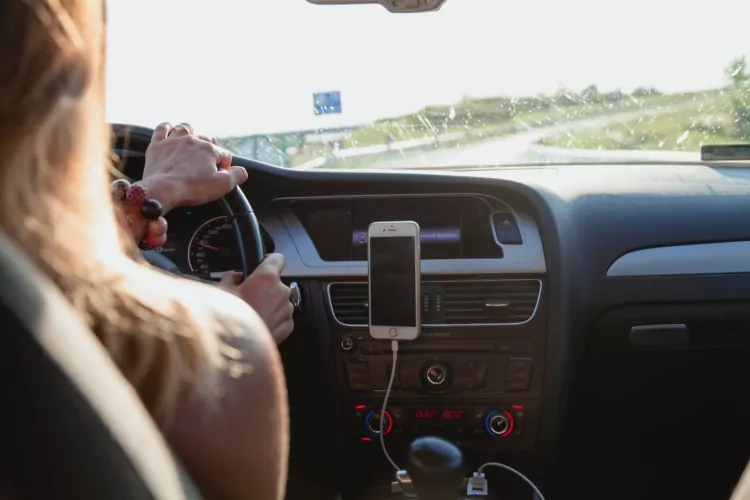Medically reviewed on 17-August-2023
Here at Optegra, one of the questions we’re often asked about laser eye surgery aftercare is whether it’s okay to drive after having treatment.
It’s important to note that you won’t be able to drive immediately after your surgery, so you’ll need to make sure that you plan your transportation accordingly. To help you prepare, we’ve put together this guide, which covers everything you need to know about driving after laser eye surgery.
For any additional questions you may have about laser eye surgery, our experienced patient services team is always here to answer any questions or to arrange a free virtual consultation.
Driving After Your Laser Eye Consultation
While we will perform a range of diagnostic tests on your eyes during your consultation, these are non-invasive, and you can safely drive home afterwards.
Can You Drive After Laser Eye Surgery?
Patients are not allowed to drive themselves home after laser eye surgery on the day of the procedure. This is primarily because the eyes may be dilated, and patients may experience temporary visual disturbances or discomfort. Additionally, some surgical procedures may require the use of sedatives or anaesthetic eye drops, which can affect vision, coordination, and reaction times.
Patients are typically advised to arrange for someone else to drive them home or to use alternative transportation, such as a taxi, on the day of the surgery. Most of our eye hospitals and clinics offer plenty of free parking, so whoever’s dropping you off will have no problems with parking. If you’re travelling to our central London eye hospital, you’ll probably find public transport or a taxi the best options, as the hospital is located right in the heart of the city.
Once you’ve booked a date for your laser eye correction treatment, you’ll need to arrange a lift to drop you off at the hospital or travel in by public transport. After the surgery, we do not recommend going back alone, using the underground, or using public transport. The underground can be quite dusty and increase the risk of an eye infection.
How Long After Laser Eye Surgery Can You Drive?
After having LASIK or LASEK, SMILE or PRESBYOND laser eye surgery, legally, you aren’t allowed to drive until you’ve been given the all-clear by your ophthalmic surgeon.
You will be given a follow-up appointment for the day after your procedure, so again, you’ll need to either ask a friend to drop you off or else take a taxi or public transport.
Every patient is different; however, the below can help as a guideline as to when you might be able to resume driving following laser eye surgery:
Day of surgery – It is illegal to drive yourself home after having the procedure.
First Follow-up Appointment (Next Day) – Patients are required to attend a follow-up appointment, typically the day after surgery. During this aftercare appointment, your surgeon will assess your progress so far and let you know whether you’ll be able to drive yet or whether you need to take a bit more time to recover.
First Few Days to a Week – During the initial days following laser eye surgery, patients may experience minimal discomfort, sensitivity to light, and fluctuations in vision. Some patients may get the all-clear to drive, depending on how their recovery is progressing.
First Week to Two Weeks – Most patients can get behind the wheel again after your surgeon agrees it is safe for you to do so.
Download Information Pack
Learn more about how our latest vision correction techniques could improve your vision and change your life. Or Book Free Consultation.
Driving At Night After Laser Eye Surgery
Driving at night after laser eye surgery can be influenced by several factors, and the potential side effects of the surgery may impact an individual’s ability to drive safely in low-light conditions. It’s important to note that the timeline for when it is safe to drive at night can vary among patients, and individual experiences may differ. Here are some factors to consider:
Visual Disturbances. In the initial days or weeks, you may notice glare and halos, which usually settle with time.
Healing Time. The timeline for recovery and resolution of side effects varies depending on the type of laser eye surgery. It’s common for patients to experience minimal visual disturbances in the immediate post-operative period, with gradual improvement over time.
Specific Procedure. Different laser eye surgery procedures, such as LASIK or LASEK, may have different recovery timelines and side effect profiles. For example, patients undergoing LASEK may experience more initial discomfort and a longer visual recovery period compared to LASIK and SMILE, which are painless procedures.
Surgeon’s Recommendations. The surgeon’s advice is crucial. Patients should follow the post-operative instructions provided by their surgeon, attend follow-up appointments, and seek guidance on when it is safe to resume activities like driving..
Immediately after surgery. You should not drive immediately after surgery; ideally, you should have someone with you to take you home after the procedure.
First Follow-up: The surgeon assesses the healing progress and provides guidance..
First Week to Several Weeks: The timeline for resolution of visual disturbances varies. Some patients may experience improvement within the first few days; others may notice improvement in a few weeks.
Several Weeks to Months: Full stabilisation of vision may take several weeks to a few months. Night vision typically improves at this stage. .
Surgeon’s Clearance: Patients should only consider driving at night after receiving explicit clearance from their surgeon. The surgeon will consider factors such as the stability of vision, the absence of complications, and the patient’s overall visual comfort.

After you’ve had the all-clear to drive
After you’ve been given the all-clear to drive, there are still some things to bear in mind after your surgery.
Some patients experience glare, especially from bright lights, in the weeks after surgery. This could cause you some slight difficulties when driving at night if you face glare from oncoming headlights. You may therefore want to try being a passenger at night first to assess whether you would feel comfortable driving yourself.
Problems with glare typically improve significantly within the first few weeks following treatment and continue to improve over the first three months.
Visit the official government website on eye conditions and driving for more information.
What Next? Contact us to discuss your laser eye surgery requirements
If you would like to know how laser eye surgery can benefit you, set up your free virtual consultation with one of our experts, and we can guide you further.

By Author: Alex J Shortt
Mr Shortt is a leading ophthalmic surgeon and an expert in the fields of cornea, cataract and refractive surgery.
Medically Reviewed Date: 27th February 2024
